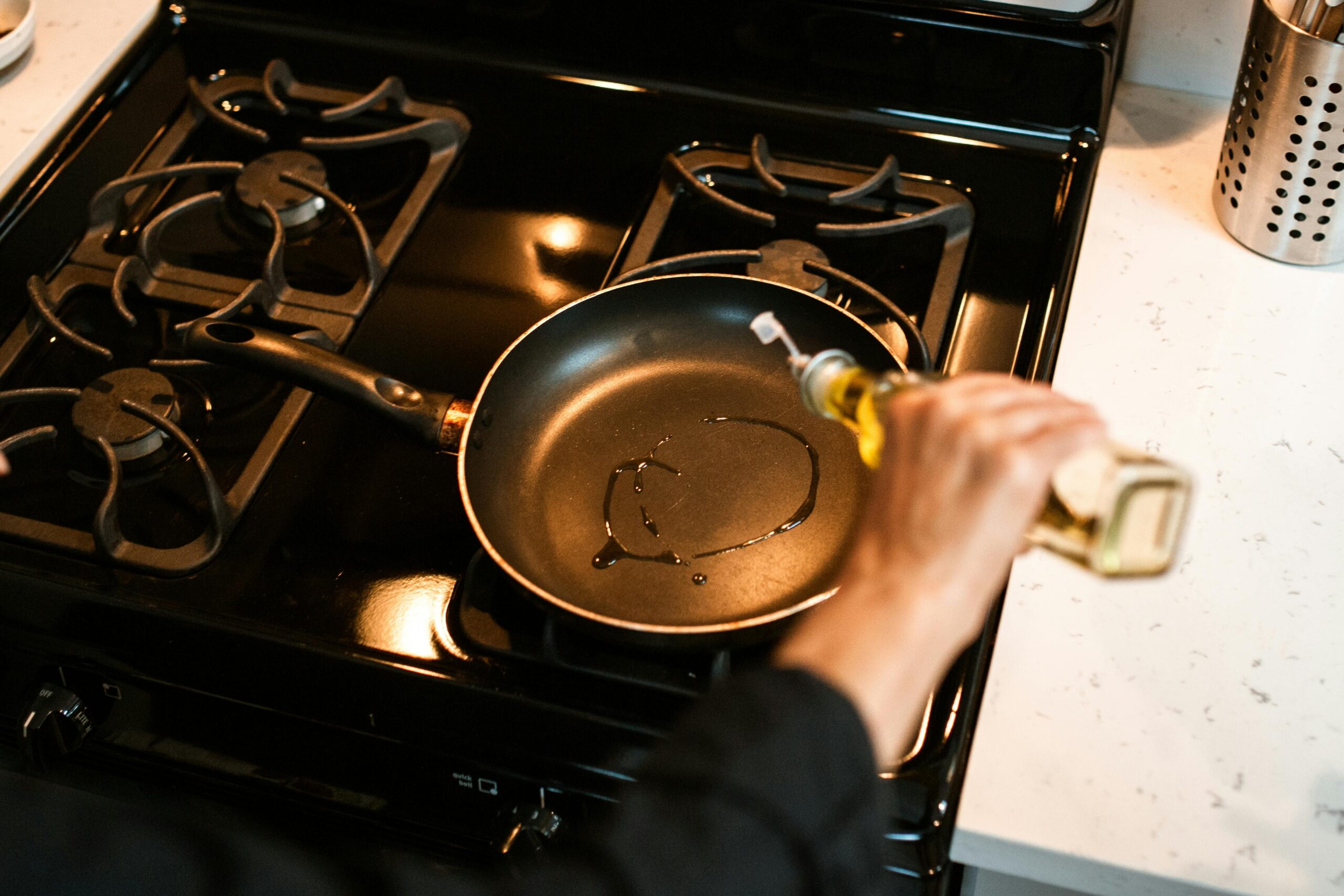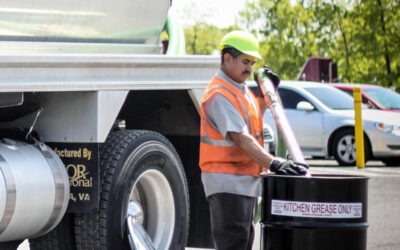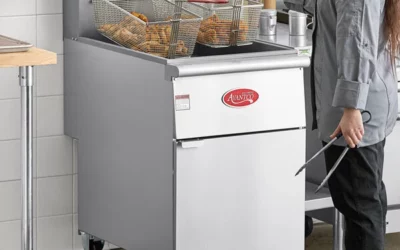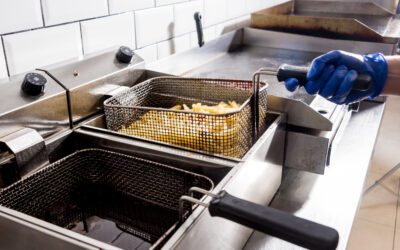Introduction
Cooking oil spills are a common occurrence in commercial kitchens, posing significant safety hazards and cleanliness concerns. Proper cleanup procedures are crucial not only for maintaining a hygienic environment but also for preventing slip and fall accidents. In this guide, we will delve into the best practices for cleaning up cooking oil spills, along with effective preventive measures to minimize the risk of spills in the first place.
Understanding the Risks
Cooking oil spills can lead to various hazards, including slippery floors, fire hazards, and environmental contamination. Therefore, it’s essential to address spills promptly and efficiently to mitigate these risks. Additionally, improper cleanup methods can worsen the situation, spreading the oil and making the area even more hazardous.
Procedures for Cleaning Up Cooking Oil Spills
- Safety First
- Before beginning the cleanup process, ensure that all kitchen staff are aware of the spill and the potential hazards it poses.
- Put on appropriate personal protective equipment (PPE), including gloves and non-slip footwear, to minimize the risk of injuries.
- If the spill is significant or poses a fire hazard, evacuate the area and contact the appropriate authorities immediately.
- Contain the Spill
- Quickly contain the spill to prevent it from spreading further. Use barriers such as absorbent pads, towels, cardboard or spill containment booms to encircle the affected area.
- If possible, block off the area to prevent foot traffic and further contamination.
- Absorb the Oil
- Use absorbent materials such as commercial absorbent pads, kitty litter, or cornstarch to soak up the spilled oil.
- Sprinkle the absorbent material generously over the spill, ensuring complete coverage.
- Allow the absorbent material to sit for several minutes to absorb the oil fully.
- Clean the Surface
- Once the oil has been absorbed, use a scraper or spatula to gently lift the saturated absorbent material from the surface.
- Dispose of the used absorbent material in accordance with local regulations for handling oily waste.
- Use a degreasing cleaner or detergent solution to scrub the affected area thoroughly.
- Rinse the area with clean water and dry it thoroughly to prevent slip hazards.
Preventive Measures
- Proper Storage
- Store cooking oils in designated containers with secure lids to prevent accidental spills.
- Ensure that oil containers are stored in a stable position away from edges or areas prone to vibrations.
- Regular Maintenance
- Implement a regular maintenance schedule for kitchen equipment, including fryers and oil storage tanks.
- Inspect equipment for signs of leaks or wear and tear, and address any issues promptly to prevent spills.
- Employee Training
- Provide comprehensive training to kitchen staff on proper oil handling procedures, including safe transport, storage, and disposal.
- Emphasize the importance of vigilance and quick response in the event of a spill.
- Slip-Resistant Flooring
- Install slip-resistant flooring in commercial kitchens to reduce the risk of slip and fall accidents.
- Regularly clean and maintain flooring to ensure optimal traction and safety.
- Adequate Ventilation
-
- Ensure proper ventilation in the kitchen to reduce the buildup of heat and oil vapors, which can increase the likelihood of accidents.
- Regularly clean ventilation systems to prevent grease buildup, which can pose a fire hazard.
- Spill Response Plan
- Develop a comprehensive spill response plan that outlines roles, responsibilities, and procedures for handling spills effectively.
- Conduct regular drills and training sessions to ensure that all staff members are familiar with the spill response plan and can act swiftly in emergencies.
- Equipment Maintenance
- Schedule regular maintenance and inspections for cooking equipment, including fryers, grills, and stovetops.
- Replace worn or damaged equipment components promptly to prevent leaks and spills.
- Non-Slip Mats
- Place non-slip mats in areas prone to spills and splatters, such as near fryers and cooking stations, to provide additional traction and reduce the risk of slips and falls.
- Regularly clean and replace mats to maintain their effectiveness.
Processes and Procedures for Oil Spills Outside
- Immediate Response
- Upon discovering an oil spill outside the kitchen, take immediate action to contain the spill and prevent it from spreading further.
- If the spill is near a storm drain or waterway, place absorbent booms or barriers to prevent the oil from entering the drainage system.
- Notify Authorities
- If the spill is significant or poses a threat to the environment, notify the appropriate authorities, such as the local environmental agency or emergency response team.
- Provide detailed information about the location and size of the spill, as well as the type of oil involved.
- Deploy Absorbent Materials
- Use absorbent materials such as absorbent pads, granular absorbents, or specialized oil-absorbing socks to contain and absorb the spilled oil.
- Apply the absorbent materials directly to the spill, working from the outer edges toward the center to prevent spreading.
- Manual Removal
- Use shovels, rakes, or other tools to manually remove the oil-soaked absorbent materials from the affected area.
- Place the contaminated materials in designated containers for proper disposal, following local regulations for handling oily waste.
- Pressure Washing
- In cases where the oil has soaked into porous surfaces such as concrete or asphalt, use pressure washing equipment to remove residual oil.
- Use hot water and detergent solutions to emulsify the oil and facilitate its removal from the surface.
- Reference – Wet Works
- Soil Remediation
- If the oil spill has contaminated soil, implement soil remediation measures to restore the affected area.
- Techniques such as soil excavation, bioremediation, and soil vapor extraction may be used to remove or neutralize the oil contaminants for excessive amounts.
- Documentation
- Keep detailed records of the spill response efforts, including photographs, cleanup procedures, and disposal records.
- This documentation can be valuable for regulatory compliance purposes and may be required by environmental agencies or insurance providers.
Environmental Considerations
- Proper disposal of used absorbent materials and oily waste is essential to prevent environmental contamination.
- Follow local regulations and guidelines for the disposal of oily waste, and ensure that all waste is disposed of responsibly.
- In addition to proper waste disposal, consider implementing sustainable practices to minimize the environmental impact of cooking oil use.
- Explore options for recycling or repurposing used cooking oil, such as converting it into biodiesel fuel or using it for composting.
Conclusion
Effective cleanup of cooking oil spills in commercial kitchens requires a systematic approach that prioritizes safety, efficiency, and environmental responsibility. By implementing proper cleanup procedures and preventive measures, kitchen staff can minimize the risk of spills and create a safer, cleaner working environment for all. Remember, quick action and proper training are key to handling cooking oil spills effectively and preventing accidents.




